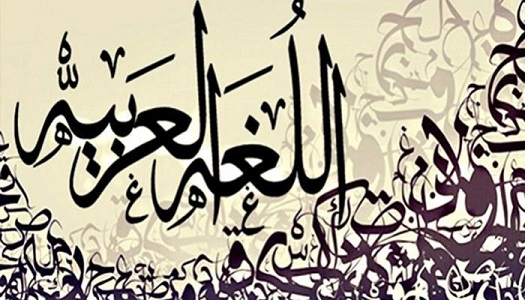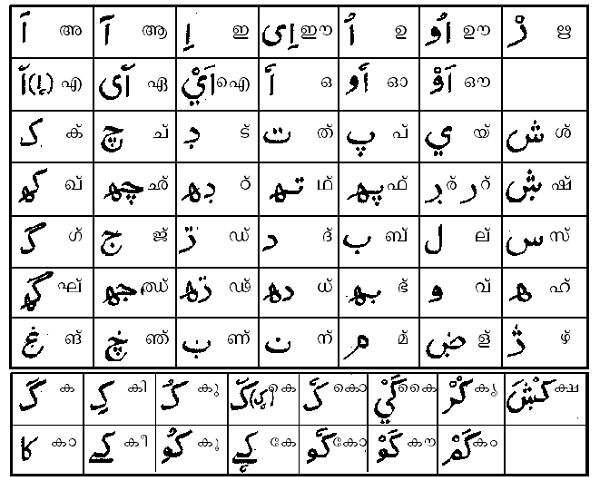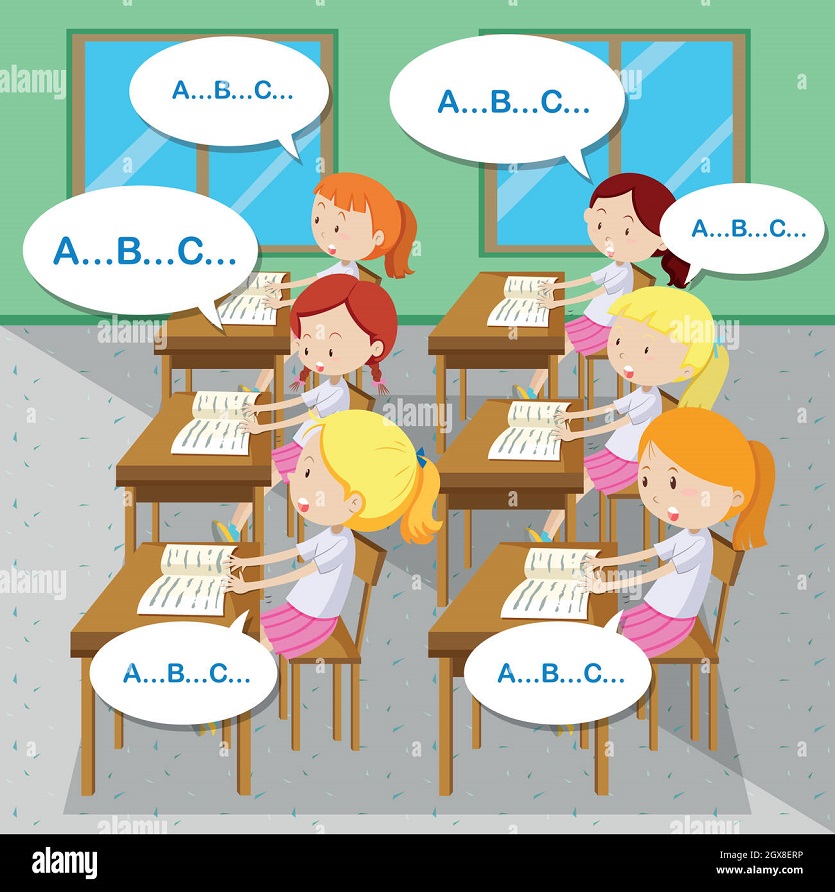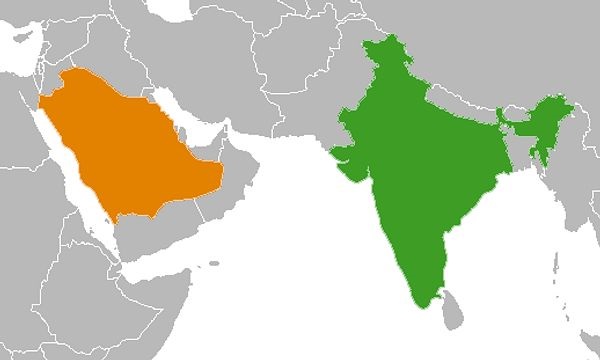
Human beings are a social species, driven by a desire for community and belonging. Social interactions feed that need. Language is a vital part of social interaction. Although all species have their ways of communicating, humans are the only ones that have mastered cognitive language communication. Language allows us to share our ideas, thoughts and feelings with others. It has the power to build societies but also tear them down. Social life is always based on the principle of give – and – take; and the same thing happens in the survival of every language in the universe. As viewed by Otto Jerspersen in his masterpiece ‘Language: Its Nature, Development and Origin ‘loaning words in language is a very common phenomenon and no language is entirely free of borrowed words’. David Crystal has described English language as an ‘insatiable borrower’ (1). A study from the University of Bedfordshire,UK reports that
more than 120 other languages have served as sources for the contemporary vocabulary of English and only 30% of English words are native and they are being used frequently in the English language (2).
(1) Cambridge Encyclopedia of the English Language (Cambridge University Press, 2010), P.267.
(2) IOSR Journal of Humanities and Social Science(IOSR – JHSS)
Volume 20, Issue 7, Ver. VII (July 2015), P 105
Relevance and Scope
It’s very remarkable to look in to what the West borrowed from the East, in various walks of civilization and culture. It cannot be denied that without borrowing the fundamental knowledge from the Middle East, the West might have developed no ideas about the basic elements of civilization. These borrowings by the west from the East started some 5000 years ago, even before the history was recorded. Prof.G.M.Wickens mentioned about these sharing in an essay entitled ‘What the West borrowed from the East’ in his book Introduction to Islamic Civilization. (Introduction to Islamic Civilization - Cambridge University Press,P.122)
Historical Perspective
Arabic, the language of the desert men was one of the most important vehicles which carried the culture of the East to the Europe. In the deserts of Arabia, before Islamic conquest, this Semitic tongue had become a beautiful language of poetry. In that barren and inhospitable land it had developed an enormous vocabulary. For any object to be found in their desert, the Arabs had may words. A poet had no trouble in rhyming his verses, for he had a large store house of synonyms from which to draw. Hence, Arabic became unmatched as a language of prose and poetry.
The Arabs were proud of their language, as befitting a proud people they spent much effort trying to keep their basic language pure. Even after the Islamic conquests, when foreign influences began to stealthily move in, scholars tried to stem them this tide. When Islam was established and moved out its Arabian homeland, Arabic was the language that carried its message. However, this pride of language did not stop the Arabs from enhancing their tongue after conquests. From the newly conquered peoples Arabic borrowed a whole range of scientific and technical terms. These words enriched the desert tongue with its many synonyms to produce a world language ‘par excellence’.
Soon after the Arabian conquests, Arabic emerged as a full-fledged language of empire and instrument of thought which was to last well into medieval time. Perhaps there is no language in the world today that survived more than 1400 years in its original form as Arabic molded in that century of Arab greatness. All of the ancient languages have either died out or have vastly changed, and all other languages came in to existence long afterward. (Ahmed Hasan Zayyath – Thareekhul AdabilArabi, Darul Ma’rifa, Beirut-Lebonon, P.7 -13)
Wilson (2001) notices that by the eighth century in North Africa Arabic has ousted Latin as the dominant language. From the 8th to the 12th centuries, Arabic became the scientific language of mankind. During this period anyone who desired to advance in the world and became a skilled and learned man had to study Arabic, just as in our day English opens the door to technical and scientific advancement for ambitious men and women. During these centuries more works were produced in Arabic than in all the languages of the world. One of the many libraries in Cordova alone had some 400,000 volumes of handwritten manuscripts.
In the Muslim regions of Spain, the use of Arabic quickly spread. By the 10th century elementary education was general throughout Arab Spain. With the exception of the very poor all boys and girls attended school. Unlike the Christian parts of Spain and the countries of northern Europe, the vast majority of people were literate. Arabic, the language of this literate population reached dazzling heights. In less than a century even the Christians living under Muslim rule became so proficient in Arabic. In the middle of ninth century we see Alvaro, Bishop of Cordova complaining that his co-religionists read the poems and romances of the Arbs and studied the writings of Muhammad’s theologians and philosophers , not in order to refute them but to learn how to express themselves in Arabic with correctness and elegance He wrote Alas, all young Christians of conspicuous talents are acquainted only with the language and writings of the Arabs; they read and study Arabic books with the utmost zeal .... and proclaim everywhere that this literature is admirable ... Alas, the Christians have forgotten their own language and amongst thousands of us scarce one is to be found who can write a tolerable Latin letter to a friend; whereas very many are capable of expressing themselves exquidetely in Arabic and of composing poems in that tongue with even greater skill than the Arabs themselves. (Prof.R.A.Nicholson : A Literary History of Arabs, P.415)
The fact that non – Muslim inhabitants preferred Arabic instead of their own languages made it inevitable that the impact of Arabic on Spanish – Roman languages would be tremendous. Arabic words began to move into the Spanish dialects, especially in the scientific and fields. This borrowing did not enter the Spanish and later the other European languages only by chance or due to an enchantment with the Arabic tongue, but as a result of European Christians trying to emulate Arabic culture – the uppermost in the world of that era. Year after the borrowing of these words gathered momentum until the time when Arab culture in Spain began to decay.
From the tenth century onward Arabic words and terms entered the Spanish dialects on a massive scale. This rich vocabulary of Arabic words was a great stimulant in the evolution of European thought. When, in Toledo, after its reconquest by the Christians, Arabic works were translated in to the European languages, Christian thinking was revolutionized and Europe was put on the path to advancement. There is no doubt that many Arabic words entered numerous European languages after these translations.
By the eleventh and twelfth centuries Arabic civilization had fully spread through Spain. Even by 724 John, bishop of Seville translated the Bible in to Arabic. Although Spain was the principal point of Arab impact, Arab influences spread to Europe also from Sicily after its conquest and Arabization. Moreover, the Crusaders returning from the civilized Arab East brought back to the Europe many new ideas. After these soldiers of the cross returned English and other European languages were enriched with numerous works, in the fields of architecture, agriculture, food, manufacturing, the sciences and trade. There is no doubt that many of the Arabic loanwords in the languages of Europe had their origin in the vocabulary of these returning warriors. All of the northern Europeans took part in these religious conflicts. Mainly, the crusaders made their wars in the Middle East but sometimes they unsheathed their swords in Sicily and Spain. Anyway, where ever these soldiers of the cross had contact with the Muslims, they always became familiar with new products made in the richer Arab lands. As the interest for these products grew, merchants travelled to the Arabian places for trade. That’s why, both merchants and warriors were instrumental in the transmission of Arabic words into the European idioms. English was one of the European languages that received an inflow of words from this early contact with Spain, Sicily and the Arab East. From these locations it was a continuing process, the flowing in of new words. Later among others, French and Portuguese were used as a medium in some of the transmissions.
From the 18th to the 20th century, when Britain extended its power to the four corners of the world, numerous other words entered English by way of Africa, the Middle East and India. Even with the end of 20th century colonialism, the influx of words did not come to an end, but has continued until the present day.
Areas of Impact
This process of borrowing Arabic words which began in the early Middle Ages has done much to enrich English language.
During the Middle and the Renaissance Ages, English speakers came into contact with the prestigious intellectual centers of the Arab world. This contact led to a flow of borrowings from Arabic into English, primarily in the fields of chemistry, medicine, philosophy, mathematics, astronomy, optics, physics, botany, literature, religion, music, warfare, shipping, trade, architecture, geography, government and sovereignty. Today, if we go through English dictionaries, we will find that words of Arabic origin under every letter of alphabet. (Oxford Advanced Learner’s Dictionary of Current English, Indian Edition, Calcutta, Oxford University Press, Delhi)
It is surprising that a study made by some scholars of the Skeats Etymological Dictionary found that Arabic is the seventh in the list of languages that has contributed to the enrichment of English vocabulary. Only Greek, Latin, French, German, Scandinavian and the Celtic group of languages have contributed more than Arabic to the English language.
There are over 3000 basic words along with 4000 derivatives of Arabic origin or transmitted through Arabic in the English language. There are more than 500 Arabic origin words employed our everyday speech. These Arabic borrowed words used in the day-to-day vocabulary point out that in almost all areas the Arabs contributed to the English way of life. Some examples of common words with their Arabic origin will provide an over view about this contribution.
Algebra
Algebra is a widely used system in mathematics. It uses symbols, instead of numbers, to solve problems. Algebra is also one of the oldest forms of mathematics. The word “algebra” itself comes from the Arabic word al jebr, which means a “reunion of broken parts.” This term was first used by a Baghdad mathematician, Muhammad ibn Musa al-Khwarizmi. He used it in the name of his book Kitab al-jabr w’al-Muqabala, which means “Rule of Reintegration and Reduction.”
The word algebra entered the English language sometime in the 15th century. Word historians believe it probably came from Arab medical workers in Spain. At first, the English word meant “bone-setting,” likely from a medical process of setting broken bones.
It has been accepted that the English word ‘Syrup’was derived from the Arabic word ‘Sharab’ means ‘drink’.The Arabic – Persian word ‘Alcohool’ ( antimony powder) was brought to English as ‘ Alchohol’. After the appearance of famous mathematician ‘Al Khawarizmi’ of 844 A.D. the west derived two mathematical terms ie. ‘Algebra’ (Algeber) and ‘Algorithm’. The word ‘Alchemy’ which entered English in 1300’s came almost unchanged from the Arabic ‘Alkimiya’.
Numbers
Many people do not realize it, but the Arabic language influenced the numbering system used in most English-speaking countries. It is called the Arabic Numeral System, or the Hindu-Arabic Numeral System.
There are several stories about where the numbers started. But most say the numeral system was first developed in India in the 6th or 7th century. There is evidence that the earliest form of some numbers may have come from Persia. They were later brought into the Arabic language through Baghdad. The final form of the numbers is likely a combination of symbols originating from Hindu and Arabic.
Many experts say it was the mathematician Al-Khwarizmi who was responsible for spreading the Hindu-Arabic numeral system throughout the Middle East, and later to Europe.
Recommendation
In the light of this study an analytical study of the impact of colonization in Arab countries in the field of Arabic language may be done exclusively, similarly a comparative reading about the influence of Arabic language on Indian languages can be carried out.
Conclusion
Words in any language travel spontaneously, sometimes by sea, by air, by road or railway or in a horse and on foot; by mail, by phone and by wire. Contact between cultures leads to loaning between languages. Over time, English and Arabic languages were in a close contact. In fact, there are hundreds of Arabic loan words in the English language. Though some of them have entered directly or indirectly, consciously and consciously; while others have come disguised as French, Spanish, or Latin words. With the spread of Islam towards the west, especially with the conquest of Spain, Italian Sicily and neighboring areas by Arabs, their culture was amalgamated with that of the West; and eventually Spain and Italy submitted noteworthy contribution for shaping the Western culture at that time. Besides that Eastern and European cultures showed the attitude of fraternity and co-operation through commerce and trade. This mutual contact enlightened the area of language also. The process of loaning words can go in both directions between English and Arabic languages when they are in contact. However, there is an asymmetry where more words go from one side to the other. Based on the previous history of loaning, there are many factors that influence the matter of loaning; these factors could be cultural, scientific or political.
Being a world language, sans of creed or color, I think Arabic language can communicate with the up-to-date international concerns, which most often look to this language with an attitude of satire and frown and survive in its full color. Moreover, the deep study in this area is ignored by the majority of English linguists except a few of them, such as Serjeantson and Taylor.
Bibliography
1. Otto Jerspersen - Language : Its Nature , Development and Origin, New York, Henry Holt & Company (on line edition)
2. Cambridge Encyclopedia of the English Language (Cambridge University Press, 2010),P.267.
3. IOSR Journal of Humanities and Social Science(IOSR – JHSS)
Volume 20, Issue 7, Ver. VII (July 2015), P 105
4. Prof.G.M.Wickens - Introduction to Islamic Civilization - Cambridge University Press,P.122
5. Ahmed Hasan Zayyath – Thareekhul AdabilArabi, Darul Ma’rifa, Beirut-Lebonon,P.7 -13
6. Prof.R.A.Nicholson : A Literary History of Arabs, P.415
7. Oxford Advanced Learner’s Dictionary of Current English, Indian Edition, Culcutta, Oxford University Press , Delhi
8. Islamic Encyclopedia ( Malayalam), IPH, Calicut – Kerala, Vol.2




